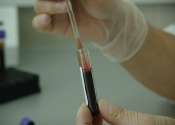CRISPR gene cuts may offer new way to chart human genome
In search of new ways to sequence human genomes and read critical alterations in DNA, researchers at Johns Hopkins Medicine say they have successfully used the gene cutting tool CRISPR to make cuts in DNA around lengthy tumor ...









